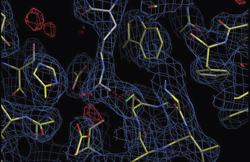If you bought a computer within the last few years, you probably realize that it can run circles around the old desktop you had lying around your house from a decade ago. The speed in loading webpages, playing games, editing media,and processing information has appeared to have exponentially increased compared to the ancient former.
Who doesn’t remember the days of using dial-up internet and hoping that no one would call home as the phone line was occupied by the modem? Then came DSL and fiber optics and our freedom of using the phone while surfing the web was established as a new norm. A few years down the road, the majority of advances of desktop computers, mainly processing power, had begun to migrate to laptops and recently, to smartphones.
This trend is the result of an observation made in 1965 by the cofounder of Intel, Gordon Moore, which is known as Moore’s Law. It states that the number of transistors per square inch on an integrated circuit will double every two years, according to intel.com.
Transistors are semiconductors which are the fundamental components of most electronic devices. They can act as amplifiers by controlling a large electrical output signal with changes to a small input signal (much the same way as a small amount of effort is used to allow a faucet to release a large volume of water). Transistors can also act as switches that can open and close very quickly to regulate the current flowing through an electrical circuit.
The evolution of supercomputers is no exception to Moore’s Law. The modern Cray XT5 Jaguar supercomputer performed 1.4 petaflops in 2008, whereby processing almost nine million times more flops than the famous Cray-1 supercomputer from 1976, according to cray. com. A “flop” is an acronym for a floating point operation per second which is a way to measure a computer’s performance, generally in processing power.
Recently, a small company known as Cycle Computing brought together a supercomputing apparatus with 50,000 processors on Amazon Web Services to run drug simulations created by two other companies: Schrodinger and Nimbus Discovery.
Cycle’s software bundle was able to perform an incredible feat of analyzing essentially, where 21 million keys would fit into one lock. The “keys” in this case consisted of a wide gamut of chemical compounds that would bind to a protein (lock) in a stereospecific manner. The task which would have taken, according to the New York Times, “12.5 processor years” was completed in a mere three hours at the cost of less than $5,000 per hour.
“I wonder what problems need clusters of computers to solve which would be conducive to this ‘Cloud’ approach. Perhaps, weather would be one,” said Dr. E. J. Kelsey, physics professor.
“Maybe, computer animation of the sort used in movies would be another. These problems are solved on the supercomputers we have today. If solving these problems were cheap, it would mean that folks that don’t have the financial backing that NOAA and Disney have could compete in these fields.”
Research that was once considered too tedious to complete or too expensive to completely analyze may finally have been granted some leeway. The commercialization of supercomputing by the rent will pave the way for a new evolution in data analysis.
In bioinformatics, for example, Cycle’s algorithms can be used to compare primary biological sequence information such as amino acid sequences of variant proteins and the myriad nucleotides of DNA sequences.
In proteomics, the company’s algorithms can be used to search and identify mass spectrometry peptide spectra for various proteins by searching against entire libraries of known compounds. In computational chemistry, Cycle can simulate the Newtonian equations of motion for systems with hundreds to millions of particles, according to cyclecomputing.com.
Nick Kulka, a junior double majoring in biology and education, thinks “Such an advancement in technology could have astonishing implications for many facets in scientific endeavors and in society. This technology could bring changes to the world that could be more beneficial than ever anticipated.”
This is just a small sliver of the latent ocean of applications we now have access to. With that emergence, more people will be able to compete in a field that has been traditionally dominated by the very top of the technological sovereign since its fruition many decades ago.
Priscilla Yick, a post-bac student at the University, agrees that “this technology has the potential to greatly accelerate scientific progress in a way that wasn’t possible before. If research facilities have the funding to afford the use of these supercomputers, then I think we can expect a lot of advances in various scientific fields in the near future.”
IMAGE TAKEN from scienceforums.net




